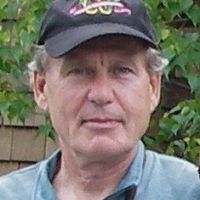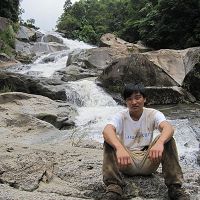Porder et al., 2015
Linking geomorphology, weathering and cation availability in the Luquillo Mountains of Puerto Rico.
Porder S., Johnson A.H., Xing H.X., Brocard G., Goldsmith S. PettRidge J. ( (2015)
10.1016/j.geoderma.2015.03.002
-
Luquillo, INVESTIGATOR
-
Luquillo, INVESTIGATOR
-
Luquillo, GRAD STUDENT
-
Luquillo, INVESTIGATOR
-
Christina, Luquillo, COLLABORATOR
-
Luquillo, INVESTIGATOR
Abstract
We explored the links between geomorphology, weathering and cation availability across the most common forest types and geologic provinces in the El Yunque National Forest, Puerto Rico. Our goal was to connect the controls on primary mineral supply to soil with stocks of plant-available cations. We established a network of 216 soil profiles comprising toposequences (ridges, slopes and valleys) in three forest types (Colorado, palm and tabonuco) on two parent rock types (quartz diorite and volcaniclastic) in a factorial design. The landscape underlain by quartz diorite is divided into lower slopes that are eroding rapidly in response to renewed uplift in the last 5 Ma, and those above a regional knickpoint where remnant landforms are eroding more slowly. Quartz diorite-derived soils (0–80 cm) below the knickpoint have lost significantly less calcium (Ca), magnesium (Mg) and potassium (K) relative to parent material (80, 65, and 57%, respectively) than those above it, which have lost 95, 81, and 83% (p < 0.007 for each comparison). The landscape underlain by volcaniclastics does not exhibit a regional knickpoint. Volcaniclastic-derived soils have lost > 90% of all base cations relative to parent material. While geology and geomorphology exert the most control on the degree of soil weathering (as measured by total soil cation loss relative to parent material), exchangeable cations are influenced by geologic, biologic, and meteoric factors. Tabonuco forests have significantly higher exchangeable cation stocks (0–80 cm) than Colorado forests, even in the 500–700 m elevation zone where the two forest types are not correlated with elevation (p = 0.02, 0.005 and 0.002 for Ca, Mg, and K, respectively). Forest type explains ~ 30% of the variance in exchangeable Mg and K stocks, but only 10% of the variance in exchangeable Ca. Quartz diorite-derived soils below the knickpoint have ~ 2 × more exchangeable Ca than those above it, and within that rapidly eroding region sites closest in elevation to the knickpoint have ~ 2 × more again. The isotopic composition of bulk soil and exchangeable strontium suggests that the high Ca stocks below and near the knickpoint are mostly derived from primary mineral weathering, whereas above the knickpoint exchangeable Ca is supplied by atmospheric deposition. These data demonstrate that regional uplift, lithology, weathering, atmospheric inputs and forest communities combine to shape cation availability across the Luquillo landscape, and we hypothesize that similar interactions are important in other montane tropical forests.
Citation
Porder S., Johnson A.H., Xing H.X., Brocard G., Goldsmith S. PettRidge J. ( (2015): Linking geomorphology, weathering and cation availability in the Luquillo Mountains of Puerto Rico. 10.1016/j.geoderma.2015.03.002. DOI: 10.1016/j.geoderma.2015.03.002
 This Paper/Book acknowledges NSF CZO grant support.
This Paper/Book acknowledges NSF CZO grant support.
Explore Further






